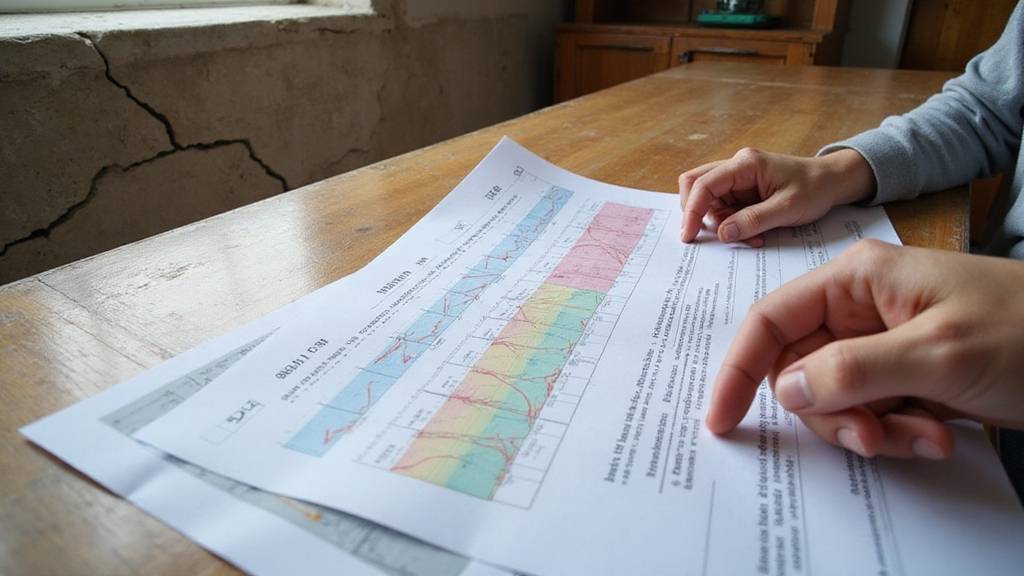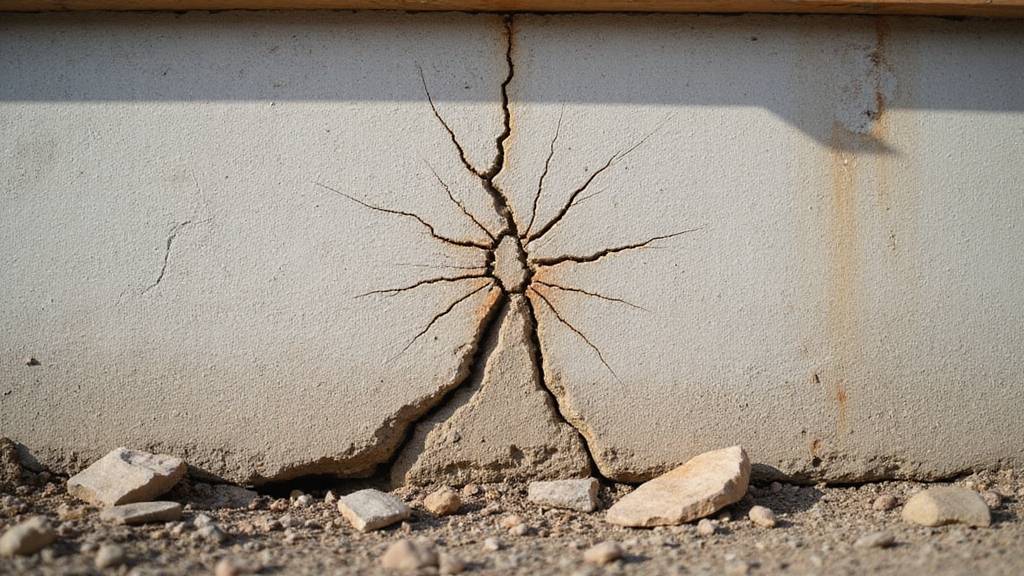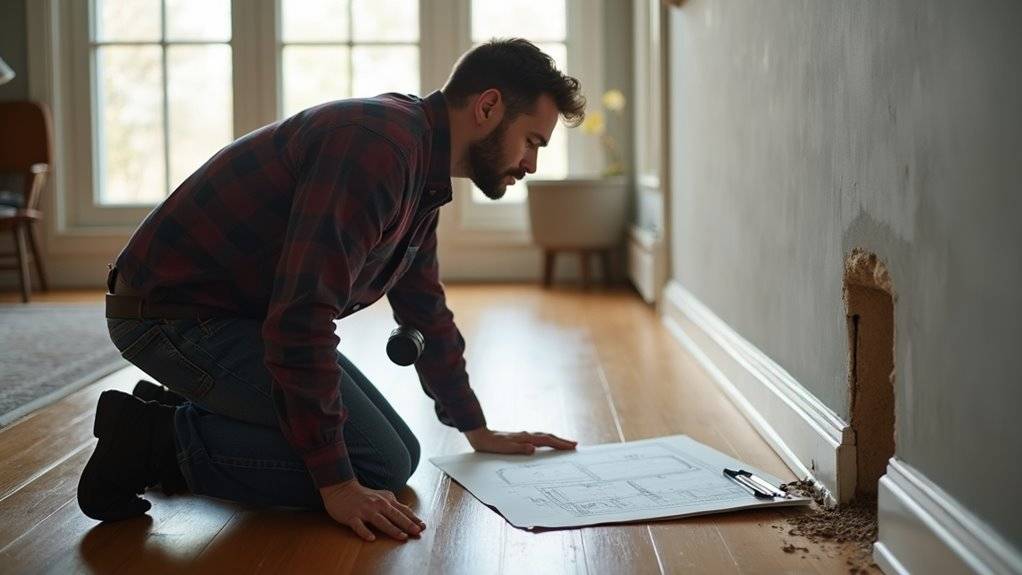Foundation issues can threaten the safety and value of your home. Cracks, uneven floors, and sticking doors are warning signs. Many homeowners feel uncertain about what these problems mean for their property.
These visible signs can hide bigger structural problems beneath the surface. You may feel overwhelmed by technical jargon in structural reports. Not knowing what to look for can lead to expensive mistakes.
Understanding structural reports helps you protect your home and make smart decisions about repairs. These reports reveal the true cause of foundation problems.
They also outline which repairs are needed and which can wait. This blog will guide you through reading structural reports so you can solve foundation issues with confidence.
Key Takeaways
- Structural reports explain the condition of a home’s foundation and are prepared by licensed structural engineers after thorough inspection.
- These reports identify visible signs of foundation problems, such as cracks, sloping floors, and structural movement.
- They provide detailed documentation of damage, assessment of soil and ground conditions, and recommendations for necessary repairs.
- Structural reports are essential for property transactions, insurance claims, and making informed repair or negotiation decisions.
- The report’s credibility depends on the engineer’s credentials, and its findings can impact home value and future repair strategies.
What Is a Structural Report?

A structural report is a written document that explains the condition of a building’s structure. A qualified structural engineer prepares this report after inspecting the property. The report answers if the structure is safe or needs repairs. It is especially useful when dealing with properties that have foundation issues, helping owners and buyers understand the severity of potential problems.
The engineer checks the foundation, walls, and soil around your home. Any cracks, shifts, or weaknesses are noted during the inspection. If the report finds problems, it may suggest what needs fixing and how urgent the repair is. This report can also be useful for insurance claims related to structural damage or foundation problems.
You can use the structural report to decide on repairs and talk to contractors or insurance companies. If you want to sell or buy a home, this report can help you understand its true condition. The information in the report helps you make safe and informed choices.
Common Signs of Foundation Problems
You’ll often spot foundation issues by noticing visible cracks in your walls or experiencing floors that feel uneven or slope unexpectedly. These signs point to underlying structural shifts that shouldn’t be ignored. It’s crucial to recognize these symptoms early, as they can indicate significant problems with your home’s foundation. Additionally, a professional inspection can help homeowners address foundation concerns promptly and efficiently.
Visible Cracks in Walls
A wall crack may mean a serious problem if it is large or growing. Small cracks are common, but some signal foundation trouble. If you see new or widening cracks, take note.
You should look for cracks that are diagonal near doors or windows. Horizontal cracks along long walls may point to shifting foundations. Jagged or stair-step cracks in brickwork can also be a warning sign.
If a hairline crack gets wider over time, it could mean more stress on the wall. Take clear photos and measurements of each crack. Detailed records will help an engineer understand the issue.
If you are unsure, always ask a professional to check the cracks. Accurate information helps them decide if repairs are needed. Early action can prevent bigger problems later.
Uneven or Sloping Floors
Uneven or sloping floors often mean there is a problem with your home’s foundation. Floors that are not level can signal serious issues and should not be ignored. If you notice this, it is important to investigate the cause.
Furniture may tilt, doors might not close, or you could feel a slight roll when walking. These signs often point to foundation settlement. If left unchecked, this can weaken your home’s structure.
If you see cracks near baseboards or floors, there could be movement under your house. An inspector can check if the slope is minor or serious. They will look for causes like shifting soil or water leaks.
If any of these symptoms appear, get a professional inspection. Taking early action can help prevent bigger and more expensive problems. Always monitor changes and keep notes for future reference.
When Should You Get a Structural Report?

A house needs a structural report if you see signs of possible foundation problems. This report helps you find issues early and protect your home. If you wait too long, repairs may become more expensive. Conducting a fair cash offer with a trusted home buyer can also help you assess the urgency of repairs and get the best deal. Additionally, understanding the legal considerations involved in property repairs can prevent future complications.
Who Is Qualified to Prepare a Structural Report?
You need a licensed structural engineer to prepare a reliable structural report, as they have the necessary qualifications and expertise. Always check for professional engineering credentials to ensure the report meets legal and safety standards. While building inspectors can identify potential problems, they aren’t authorized to provide the detailed analysis or recommendations found in a structural engineer’s report.
Additionally, following proper assessment procedures is essential to accurately evaluate foundation issues and ensure compliance with relevant regulations. Proper inspection techniques help in obtaining an accurate and comprehensive understanding of the foundation’s condition.
Licensed Structural Engineers
Licensed structural engineers are the only professionals qualified to write official structural reports for homes with foundation problems. Their reports are required for legal and insurance purposes. If you need foundation repair or soil testing, you must hire a licensed structural engineer.
These engineers use their knowledge to check your home’s foundation, framing, and load-bearing walls. They document any damage, movement, or settlement they find. Reports from licensed engineers are accepted by lenders, insurers, and contractors.
If a structural engineer inspects your home, you will receive expert repair recommendations based on your property’s soil conditions. Their work meets strict standards. Choosing a licensed engineer ensures your foundation decisions are safe and reliable.
Professional Engineering Credentials
A person qualified to prepare a structural report for a home with foundation issues must be a licensed structural engineer. This engineer should have proper certification recognized by the state. Without these credentials, a report may not meet industry or legal standards.
Different professionals have different qualifications. A licensed structural engineer can always provide a structural report. A civil engineer can also do this if they have the right license.
Contractors, architects, and home inspectors cannot prepare structural reports. Their background does not meet legal requirements for these reports. If you need an official assessment, only hire a certified structural engineer.
Always check the engineer’s license and ask about their experience with home foundations. If you want a reliable report, use only qualified professionals. This protects you and your property.
Role of Building Inspectors
Building inspectors check homes for problems during inspections. They do not create structural reports about foundation issues. Only structural engineers can write detailed reports for such problems.
Inspectors know building codes and follow inspection rules. Their job is to look at visible parts of the home and note any concerns. They do not give structural advice or make design plans.
If an inspector finds a problem with the foundation, they may suggest calling a structural engineer. Inspectors can list defects they see and mention code violations. They do not calculate structural safety or provide repair solutions.
Always choose a structural engineer for foundation or major structural concerns. Building inspectors are helpful for general checks, but not for in-depth analysis.
Key Components of a Structural Report
A structural report shows the main parts of a home’s foundation problem. It gives a clear summary of what is wrong. This helps you quickly understand the main issues.
The report describes the foundation design. It lists the materials used and explains how the foundation was built. It also mentions if anything was done differently than usual.
A soil analysis section looks at the ground under the home. It checks the type of soil, its stability, and how wet it is. These factors affect the strength of the foundation. Soil type, stability, and moisture are key factors beneath your home that impact the foundation’s overall strength.
The report lists any damage found, such as cracks or movement. It explains how serious these problems are. This helps you know what needs attention.
There is a section with repair advice and suggestions for future checks. You can use these recommendations to plan repairs or watch for more changes. If you follow this advice, you can protect your home’s foundation.
Additionally, understanding the local real estate market can help you make informed decisions about repairs and selling options, especially if foundation issues influence your property’s value.
Typical Inspection Process for Foundation Issues

A foundation inspection follows a clear process to find issues early. Inspectors check for signs of settlement and other structural problems. They use careful methods and do not rely on a quick look.
Inspectors look for cracks in walls, floors, and ceilings. They measure these cracks to spot patterns and check their size. If cracks are wide or growing, this can mean a serious issue.
Special tools help inspectors check if floors are level. Uneven floors may show that the foundation is settling. If they find sloping or dips, they note these for further review.
Exterior foundation walls are checked for bowing, bulging, or shifting. Any movement here can mean the foundation is under stress. Inspectors record any changes they find.
Moisture around the foundation is also inspected. Water can speed up settlement or cause damage. If inspectors notice dampness or leaks, they include this in their report.
A thorough foundation inspection also considers the age of the home, which can influence the likelihood of issues and necessary repairs. Additionally, understanding the local soil conditions can help predict potential foundation problems and guide repairs or reinforcement strategies.
How Structural Engineers Assess Foundation Damage
Structural engineers assess foundation damage by checking for visible signs and measuring their severity. They look for cracks, uneven floors, and doors that do not close properly. If these issues are present, they perform a detailed evaluation. A thorough understanding of the local real estate market can help determine the potential impact of foundation issues on property value.
Engineers document each problem and measure how much the foundation has settled. They check the soil type because some soils can shrink or swell with moisture. If the soil is unstable, it can make foundation issues worse. Additionally, understanding soil stability helps engineers anticipate future problems and recommend appropriate repairs.
Special tools like laser levels and moisture meters help engineers collect accurate data. They also review how the building was built and if any repairs were made before. If earlier repairs failed, it may signal deeper problems.
Here is a summary of their steps:
| Assessment Step | Purpose |
|---|---|
| Visual Inspection | Spot obvious damage |
| Crack Measurement | Measure how bad the settling is |
| Soil Analysis | See how soil affects the foundation |
| Levelness Checks | Find uneven areas |
| Review Repair History | Learn about past fixes |
Interpreting the Findings in a Structural Report
A structural report explains what the engineer found about your home’s foundation. You should read the report to understand any problems. The report will help you see if repairs are needed.
Cracks are described by their size and direction. If cracks are wide or long, there may be serious issues. Small cracks may be from normal settling.
Engineers note any tilting in walls or floors. Uneven floors or misaligned doors can mean the soil is shifting. If these problems appear, the foundation may be unstable.
Photographs in the report show damaged areas. Written summaries explain how serious the damage is. Recommendations in the report tell you what actions to take.
You should review all these details to know your home’s condition. If you find severe problems, contact a professional for advice. Always use the report to guide your next steps.
Additionally, understanding the types of foundation issues documented can help you prioritize repairs or decide whether to sell as-is. Recognizing soil movement and its impact is crucial in assessing the overall stability of your home’s foundation.
Potential Recommendations for Repairs
You’ll often see structural reports outline specific repair recommendations, such as reinforcement methods for compromised foundations, targeted drainage improvements, and various soil stabilization options. Each recommendation addresses distinct underlying causes and is selected to maximize long-term stability. Understanding why these solutions are proposed helps you make informed decisions about the next steps for your property.
Reinforcement Methods Explained
When a structural report finds foundation problems, it is important to know the recommended reinforcement methods. These methods help keep your home stable and maintain its value. A structural engineer chooses the best solutions after soil tests and a foundation check.
Steel push piers are long metal rods pushed deep into solid soil. These piers help support and lift weak foundations. Engineers use them if the soil under your house is not strong.
Helical piers look like large screws and go deep into the ground. They work well for lighter buildings or tricky soil types. If your soil is loose or soft, this method may be suggested.
Slab underpinning adds extra concrete or steel under your foundation. This process increases how much weight your foundation can hold. If your foundation is sinking or cracking, underpinning may be needed.
Wall anchors use metal plates and rods to hold basement walls in place. These anchors stop walls from bowing or moving. If your basement walls are shifting, this is a common fix.
Each method is chosen based on your soil test and the condition of your foundation. Proper reinforcement prevents further damage and keeps your home safe.
Drainage Improvements Suggested
Addressing drainage issues is important for protecting your home’s foundation. If water does not drain away properly, the foundation can move or crack. Drainage improvements are often recommended in structural reports for long-term stability.
Common solutions include regrading soil, installing French drains, and extending downspouts. Each method is designed to move water away from the foundation. If you follow these suggestions, you can lower the risk of soil getting too wet or shifting.
The table below shows common drainage solutions:
| Solution | Purpose | Typical Location |
|---|---|---|
| French Drain | Redirects groundwater | Perimeter of house |
| Gutter Extension | Moves roof water farther | Downspout outlets |
| Surface Grading | Slopes ground away | Around foundation |
| Swales | Channels surface water | Yard low areas |
Good drainage protects your foundation and helps prevent future problems. If you improve drainage, your home will be more secure.
Soil Stabilization Options
Soil stabilization makes the ground under your foundation stronger and safer. It is needed if your soil is loose, soft, or prone to shifting. If the soil is unstable, your foundation could crack or move in the future.
Chemical injection can help by bonding soil particles together. This process makes the ground less likely to expand or shrink. It is useful if your soil changes a lot with moisture.
Compaction grouting pumps thick grout under the foundation to fill empty spaces. This makes the soil denser and able to support more weight. It works well if the ground has settled or is weak.
Soil replacement removes poor soil and adds stronger, engineered fill. This option works best if the original soil is too risky to keep. It provides a more stable base for your home.
Geotextile reinforcement uses strong fabric layers to hold the soil in place. These layers also help spread out the weight of your foundation. It is helpful if you need extra support in certain areas.
A structural engineer will suggest the best method for your situation. Always follow their advice for long-term safety. If you are unsure, ask them to explain your options.
Costs Associated With Structural Reports
A structural report for a home with foundation issues usually costs between $500 and $1,500. The price depends on the property’s size, location, and how serious the foundation problems are. If the engineer needs special tools or more tests, costs may increase.
Detailed reports with photos and clear findings usually cost more. These reports are helpful for planning repairs and making decisions. If you want an accurate quote, ask what is included in the service.
Some engineers only offer a basic check, while others give a full report. You should always check the engineer’s credentials before hiring them. If you pick a qualified professional, you get clear and trustworthy results.
How a Structural Report Impacts Home Value
A structural report affects your home’s value by showing its true condition. This report gives clear details about your home’s foundation and structure. If you want to know your home’s worth, you need an accurate structural report.
The report can point out foundation issues that might lower the value. If repairs are complete, the report can help you ask for a higher price. Buyers and appraisers will trust the information in the report.
A structural report gives proof of your home’s condition. It helps reduce doubts during price negotiations. If the report is good, your home may attract more offers.
Using Structural Reports in Real Estate Transactions
Structural reports are important in real estate transactions because they reveal the true condition of a property. These reports help both buyers and sellers understand any structural problems. If there are concerns about foundation settlement, a structural report provides key details.
The report describes the current state of the structure. It also notes any signs of movement or damage and states if repairs are needed. Sellers can use it to show transparency and explain their asking price.
Buyers may use information from the report to negotiate repairs or a lower price. Mortgage lenders and insurance companies sometimes require these reports before approving loans or coverage. If a report finds major issues, it may affect the entire sale process.
Differences Between Structural Reports and Home Inspections
You’ll notice key differences between structural reports and standard home inspections, both in the scope of assessment and the qualifications needed to perform them. While home inspections give you a general overview of the property’s condition, structural reports focus specifically on the integrity of the foundation and load-bearing elements, requiring specialized expertise. Only licensed structural engineers or comparably qualified professionals can provide this level of analysis, ensuring you receive precise evaluations where it matters most.
Scope of Assessment
Structural reports and home inspections have different scopes. A home inspection covers general safety and maintenance, but not deep structural issues. A structural report focuses on your home’s framework and foundation.
A home inspector checks outlets, appliances, and visible leaks. The inspector also looks at basic systems and cosmetic damage. If you need a detailed review of your foundation, a home inspection is not enough.
A structural engineer examines cracks, wall movement, and support beams. The engineer also checks soil movement and long-term stability. If your home shows signs of foundation problems, a structural report is necessary.
Choosing the right assessment depends on your needs. If you want a general overview, get a home inspection. If you suspect serious structural issues, choose a structural report.
Professional Qualifications Required
Structural engineers must have a license and special training. They study foundations, soil, and ways to fix structural problems. Their education lets them find and solve complex issues safely.
Home inspectors have general training and look at the overall condition of a home. They can spot visible problems but cannot diagnose deep foundation issues. Only engineers can recommend technical repairs or solutions.
If a house has foundation concerns, you should hire a qualified structural engineer. This ensures proper testing and repair advice. Always check for the right credentials and experience.
Steps to Take After Receiving a Structural Report
After you get a structural report, read it carefully to understand any issues and recommended fixes. The next steps depend on what the report says. Act quickly if the report finds urgent problems.
Review the summary and recommendations in the report one by one. If the report mentions soil problems, arrange for professional soil testing. Testing helps you learn if ground movement or moisture is a concern.
Go through the report’s recommendations carefully and schedule soil testing if any ground movement or moisture issues are mentioned.
Collect repair quotes from several qualified contractors. Compare their prices, materials, and repair methods before choosing one. Make sure all proposals match the report’s recommendations.
Set a repair timeline that fits your budget and the seasons. If repairs are urgent, schedule them as soon as possible. Plan ahead to avoid delays and higher costs.
Conclusion
If you want to protect your home’s value, understanding structural reports is essential. These reports help you spot foundation problems early. If you act quickly, you can avoid costly repairs and keep your investment safe.
When you work with licensed experts, you get clear information about your home’s foundation. If you are thinking about selling, a thorough report gives buyers confidence. If you need to move fast, selling to a cash buyer can be a good option.
If you want to sell your house quickly, we can help. At Freedom Path Investors, we buy houses for cash in any condition. Contact us today to learn how we can make the selling process easy for you.







